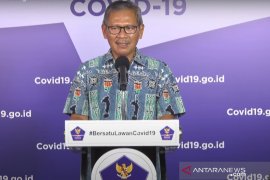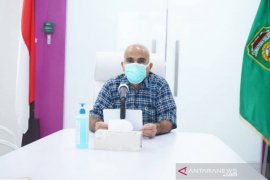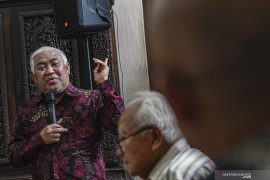He said, according to the findings of research conducted by a stakeholder, the site was a Buddhist education center that flourished during the 7th and 8th centuries.
"The results of archaeological research also showed there was a similarity between the bricks used to build the Muaro Jambi shrine and those making up Buddhist temples in India," the governor said.
The Jambi provincial government had done its best to preserve the remnants of the Muaro Jambi shrine so that it could always be shown to participants of national and international events held in the province who were expected to testify about its conditions as being worthy of world heritage status.
The Society of Muaro Jambi Temple (SOMT) also continued to fight for Muaro Jambi temple site in Muaro Jambi district to be recognized by the world community as a world heritage.
"The SOMT continues to fight for the Muaro Jambi temple in order to be known in foreign countries through various activities and publications as well as seeking the Organization of Educational, Scientific and Cultural Organization (UNESCO)`s recognition," a management member of SOMT, M Romy said.
The SOMT already engaged in the introduction of the temple site since a year ago through a program that has been prepared and planned.
The SOMT has also been working with the district and provincial administration through the Culture and Tourism office to jointly fight for Muaro Jambi temple in order to make it well-known and recognized as one of the world heritages.
The various activities have been conducted of which is to establish a cooperation with the Government of India, especially Nelanda, an area that has a similarity with Muaro Jambi temple, as there is an inscription on the teachings of Buddhism that also found in the Muaro Jambi temple site.
The cooperation is already underway, the both parties have visited each other to their respective countries.
In the area of ​​the Muaro Jambi enshrinement site, there are some temples namely Astano, Tinggi, Gumpung, Kembar Batu, Gedong, Kedaton and Koto Mahligai.
Seen from their architecture, the buildings were a Buddhist cultural heritage in the fourth and fifth centuries AD.
In the Muaro Jambi enshrinement complex, there also Kembar batu temple which is located about 250 meters southeast of the Tinggi temple which is restricted by a fence around a rectangular with a size that is not the same at each sides. At this location, there was also found a Chinese Gong by the archaeologists.
Until the beginning of 21st century, there has been identified approximately 110 buildings, consist of 39 groups of temple at the Muaro Jambi enshrinement site.
The temple building is a legacy of the Malay kingdom until the kingdom of Srivijaya eras, with a Buddhist Malay cultural background and it is expected that the temples was constructed since the fourth century AD. Among the group of the temples is Gumpung temple.
Meanwhile, the director general of History and Archaeology, Ministry of Culture and Tourism, Arurora Tambunan also promised aid for the development of the Muaro Jambi temple site.
"We will seek funding to develop the Muaro Jambi temple site because it is a potential to be developed as a cultural heritage of Jambi," she said.
According to Aurora, the Muaro Jambi temple site is a priceless treasure. The Muaro Jambi enshrinement site length reaches to 7.5 km and consists of many temples.
The Culture and Tourism office of Jambi province will create a tour package through Batanghari river toward Muaro Jambi temple site, which is equipped with cultural and culinary tours of Muaro Jambi district, Head of Jambi provincial Culture and Tourism office, DR Didy Wurjanto, MSc explained.
The location of the site extends along 7.5 kilometers along with the Batanghari river banks flow and at the some points of the river edge there are ancient canals or artificial river that connect with the Batanghari river site area.
Through the ancient canal that encircled the site, in the past a row of buildings of the temple location could be reached.
The Muaro Jambi enshrinement site area ​​which has the area of 2,062 hectares has at least 82 ruins of ancient buildings made ​​of brick structures.
A total of seven pieces of the temple buildings have been extensively conserved, while the rest are still in ruins, covered with the primary and secondary forest vegetation, and the local people`s farm lands.
The seven buildings of the temple are Gumpung, Tinggi I, Tinggi II, Batu Kembar, Astano, Gedong I and Gedong II as well as Kedaton.
Besides, some parts of the ancient canals and ponds vegetation that were originally covered by water plants had been cleaned, such as Jambi river ancient canal and Telago Rajo ancient pond.
(Uu.KR-LWA/HAJM/A014)
Editor: Priyambodo RH
Copyright © ANTARA 2011











